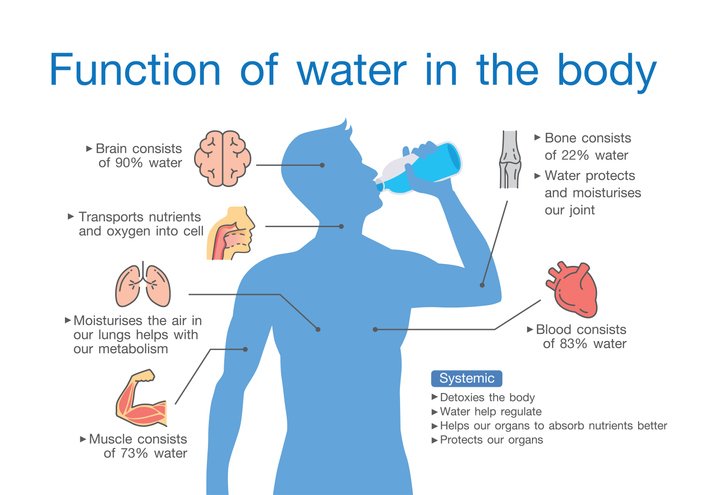Originally published on phlabs.org
“It’s the most wonderful time of the year,” according to singer Andy Williams, but it’s also a very dehydrating time of the year. Due to holiday parties and extremely hectic schedules from trying to cram in as much as possible in the last few days of 2022, you may find that you are drinking a lot of alcohol and coffee and not getting enough water.
Many people do not even realize they are dehydrated until they feel thirsty. Being dehydrated can lead to poor circulation, hypertension, hunger pangs and overeating, headaches, fatigue, lack of moisture in the skin and more. And, of course, in very severe cases dehydration can lead to death.
Although I am a major advocate for drinking plenty of water throughout the day, I acknowledge that it can be difficult at times.
In mild cases of dehydration, drinking water can help to replenish lost fluids and electrolytes. It is important to drink enough water to meet your body's needs, which can vary depending on factors such as your age, sex, weight and activity level.
Certain cases of dehydration may require more than just water. This may include the use of intravenous (IV) fluids, such as saline solution or lactated Ringer's solution, which can be administered directly into the bloodstream to replace lost fluids and electrolytes.
Lactated Ringer's Role in Addressing Hydration
Also called Ringer’s lactate solution, and known as sodium lactate solution, this “cocktail” is administered intravenously and is essentially a hydration and electrolyte bomb.
Ringer’s lactate consists of:
Sodium
Chloride
Potassium
Calcium
Lactate (in the form of sodium lactate)
Doctors may use lactated Ringer's solution in a variety of situations, including but not limited to:
Dehydration: Ringer's solution can be used to treat dehydration by replacing lost fluids and electrolytes. It is often used for mild to moderate dehydration, particularly when the patient is unable to drink fluids orally.
Electrolyte imbalances: Ringer's solution contains electrolytes such as sodium and potassium, which are important for maintaining the balance of fluids in the body. It can be used to treat electrolyte imbalances caused by conditions such as diarrhea, vomiting or excessive sweating.
Blood loss: Ringer's solution can be used to replace fluids and electrolytes lost during blood loss.
Shock: Ringer's solution can be used to treat shock by increasing the volume of fluids in the circulatory system and maintaining blood pressure.
Surgery: Ringer's solution may be used to maintain hydration before, during and after surgery.
Saline Solution Is Also Used For Hydration
Saline solution and lactated Ringer's solution are both sterile electrolyte solutions that are used for intravenous (IV) infusion. However, there are some differences between the two solutions:
Composition: Saline solution is made up of sodium chloride in water, while lactated Ringer's solution contains sodium chloride, potassium chloride, calcium chloride and sodium lactate in water.
pH: Saline solution has a neutral pH of around 7, while lactated Ringer's solution has a slightly basic pH of around 7.4.
Uses: Both saline solution and lactated Ringer's solution can be used to treat dehydration and electrolyte imbalances, but lactated Ringer's solution may be preferred in certain situations due to its slightly higher pH and the presence of lactate, which can be converted to bicarbonate in the body, potentially making it more effective in correcting acidosis.
Both Saline solution and lactated Ringer's solutions are referred to as crystalloid solutions. They are fluids that contain small molecules that can easily pass through the walls of blood vessels.
The OASIS IV, 500 ml of Lactated Ringer’s Solution may be the perfect “cocktail” for your fluid and electrolyte replenishment. It produces diuresis (increased urination) which may reduce blood pressure. It also acts as an alkalizing agent by reducing acidity in the body.
People with liver disease and lactic acidosis (having too much lactic acid in the body) need to be especially mindful when it comes to getting Ringer’s solution. pH Drip Lab will go over your health history with you and make sure you receive the appropriate vitamin infusion or injection.
Have a healthy, happy and hydrated holiday!
Disclaimer: This article is not intended to provide medical advice. Please consult with your doctor or another competent healthcare practitioner to get specific medical advice for your situation.










